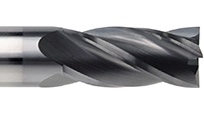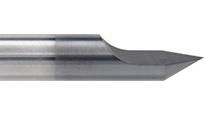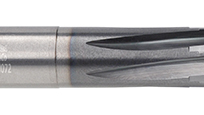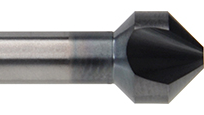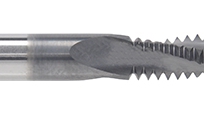End Mill Shapes and Sizes: A Guide to Choosing the Right Tool for Your CNC Machining Needs
Understanding End Mill Types, Sizes, and Their Applications for Optimal Cutting Performance
End Mill - Drill - Reamer
We are proud to offer the products listed in our catalogue. To help our customers experience first-hand the quality and reliability of our tools, we invite you to review our catalogue and request samples. This initiative reflects our confidence in the superior performance of our products and our commitment to customer satisfaction.
End Mill Shapes and Sizes: A Comprehensive Guide
End mills come in various shapes and sizes to accommodate different machining needs. Choosing the right end mill for a specific application is crucial to achieving the desired result in CNC machining. Here’s a guide to help you understand the different shapes and sizes of end mills and their uses:
1. End Mill Shapes
End mills are primarily defined by the shape of their cutting edges. Below are some of the most common shapes used in CNC machining:
a) Square End Mills
- Description: These are the most common type of end mills, with flat cutting edges at the bottom.
- Uses: Ideal for general milling, including profiling, slotting, and engraving.
- Advantages: Provides a sharp, precise cut with excellent surface finishes.
b) Ball Nose End Mills
- Description: These have a rounded bottom instead of a flat one, making them perfect for 3D contouring.
- Uses: Commonly used in profiling and finishing operations, particularly in 3D machining and cavity milling.
- Advantages: Offers a smooth finish on curved surfaces and is ideal for working with complex shapes.
c) Corner Radius End Mills
- Description: These end mills have a small radius at the corner, reducing the sharp edge and providing a longer tool life.
- Uses: Used in both roughing and finishing operations, especially when cutting tough materials.
- Advantages: Reduces tool breakage and provides better surface finishes than square end mills.
d) Tapered End Mills
- Description: These end mills have a tapered shape, either at a conical angle or a more steep angle.
- Uses: Used in chamfering, undercutting, and engraving operations.
- Advantages: Ideal for accessing hard-to-reach areas in 3D machining.
e) Radius End Mills
- Description: These end mills have a rounded radius on the cutting edge.
- Uses: They are perfect for contouring, profiling, and creating rounded edges on workpieces.
- Advantages: The rounded edge provides a smoother cut compared to a sharp edge, making it suitable for specific finishing tasks.
2. End Mill Sizes
The size of an end mill refers to its diameter, length of cut, and overall length. Selecting the appropriate size is critical to ensure effective material removal, avoid tool chatter, and achieve desired results.
a) Diameter
- The diameter of the end mill determines the width of the cut.
- Larger diameters are ideal for removing more material quickly, while smaller diameters offer more precision and are better for finer details.
b) Length of Cut (LOC)
- Length of cut refers to the part of the tool that actually engages with the material.
- Shorter LOC tools provide greater rigidity and are ideal for precision cuts, while longer LOC tools allow for deeper cuts but may experience more deflection.
c) Overall Length (OAL)
- The overall length refers to the total length of the end mill from the tip to the shank.
- A longer OAL provides more reach but can result in less rigidity, which can affect the quality of the cut.
d) Flute Length
- Flute length is the portion of the tool that contains the spirals, which help remove material.
- Depending on the cutting depth required, the flute length can vary. Longer flutes are suited for deeper cuts, while shorter flutes are better for shallow milling operations.
3. End Mill Coatings
Many end mills come with specialized coatings to increase tool life and improve performance, such as:
- Titanium Nitride (TiN): Increases hardness and improves wear resistance.
- Titanium Carbonitride (TiCN): Provides a better wear resistance for harder materials.
- Diamond Coating: Ideal for non-ferrous materials like aluminum and plastics.
4. How to Choose the Right End Mill Shape and Size
Choosing the right end mill shape and size depends on the following factors:
- Material Type: Choose a shape and size that fits the material you are machining. For harder materials, select tools with stronger shapes (e.g., corner radius or square end mills).
- Cutting Depth: Choose the right LOC for the required cutting depth.
- Surface Finish: If a smooth finish is needed, choose a ball nose or radius end mill.
- Tool Life: For longer tool life, consider selecting corner radius or tapered end mills that reduce wear.
Get the Right End Mills from Industrial-Tools
At Industrial-Tools, we offer a wide range of end mill shapes and sizes, from square end mills to ball nose and tapered mills, suitable for every machining application. Whether you're working with soft materials or tough alloys, our high-quality end mills ensure precise cuts and high durability.
At Industrial-Tools, we provide the finest CNC tools available to help you streamline your production and achieve flawless results every time.
Browse our extensive selection of CNC tools today and get the best quality tools for your machining needs.
Contact us for more information on our products and how they can benefit your business.
